How to grow chilli peppers
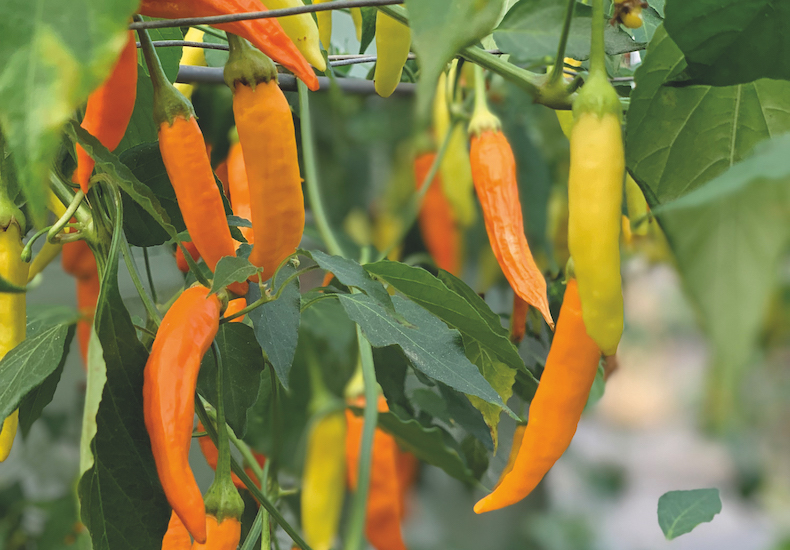
Learn how to grow chilli peppers with our helpful guide
Image: Chilli Pepper 'Havana Gold' from Thompson & Morgan
Growing chillies at home is easy, and there’s a huge variety of different types to choose from. Whether you want flavour, heat or colour, there’s a chilli pepper seed for every occasion. Homegrown chillies can be delicately mild or fiercely hot. Incredibly versatile, you can grow them on sunny windowsills, in a greenhouse, or directly in the ground. They’re also perfect for containers and their brightly-coloured fruits are a great way to brighten up conservatories or patios.
Here's how to grow your own bumper crop of chillies from seeds or plants.
How to choose the best chilli pepper
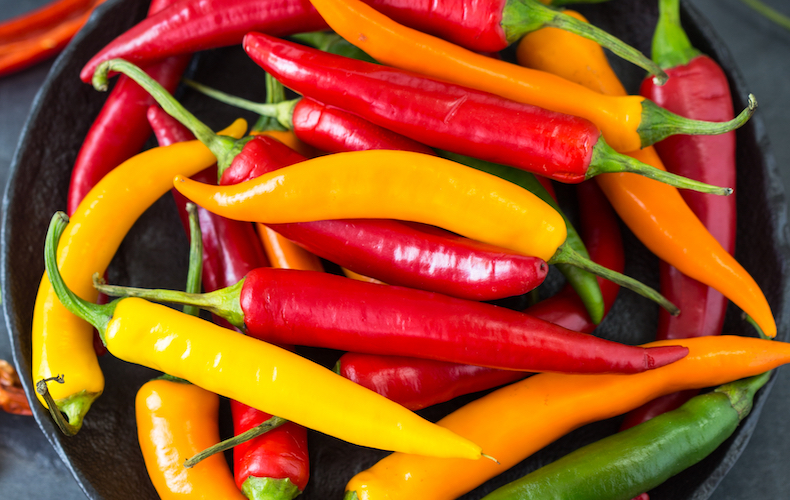
Chillies are a colourful way to add heat to your recipes
Image: Chilli Pepper 'Heatwave Improved Mix' F1 Hybrid from Thompson & Morgan
Chillies contain a chemical called capsaicin that stimulates the nerve endings in your mucous membranes; that's what makes them feel hot when you bite into one. The amount of heat depends on the variety, the maturity of the plant and the growing conditions.
The heat of each chilli is measured by the Scoville Scale. In 2017, Welsh fruit grower Mike Smith accidentally grew the world's hottest specimen. Registering 2.48 million on the Scoville scale, experts say that just one of his ‘Dragon's Breath’ chillies is enough to trigger anaphylactic shock!
Whether you like your chillies delicate and mild or sizzling hot, there’s plenty of choice. Try planting a few different varieties to find the one that suits you. Some of our favourites include:
- Jalapeno M - medium heat, ideal for salsas and pizza toppings.
- Padron - pick small and green for medium heat or allow to mature to a much hotter red. This tapas pepper is great in stir fries.
- Heatwave Improved Mix - hot and beautifully ornamental.
- Demon Red - very hot, attractive dwarf variety bred for windowsills and containers.
- Tropical Heat - extremely hot mix of red and orange Caribbean 'Habenero', plus yellow and red 'Scotch Bonnets'.
How to grow chillies from seed
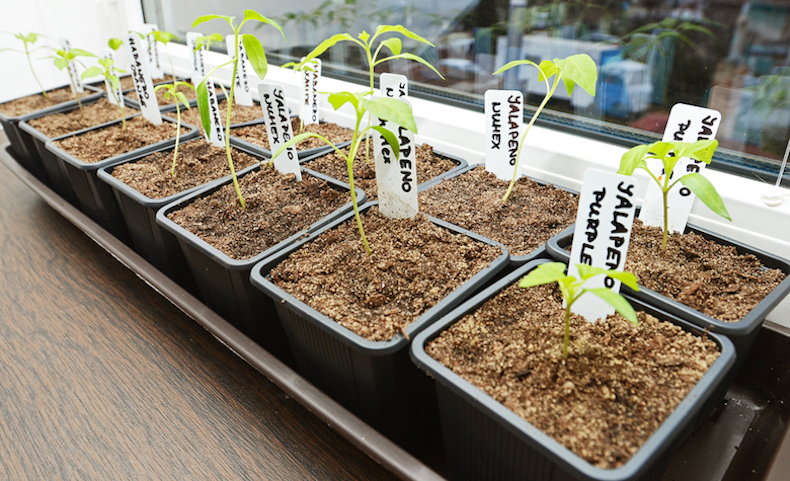
To reach maximum growth chillies need plenty of warmth
Image: Jiri Foltyn/Shutterstock
January and February are the perfect months to start sowing your chilli pepper seeds indoors. Although you can still sow the seeds right up until the end of March, early sowing gives your chillies plenty of time to ripen before the end of summer.
The hottest varieties need the longest growing period. If you didn’t give yourself enough time to grow from seed this year, don’t worry, you can buy chilli plants too. Here’s how to grow your own chillies from seed:
- Start your seeds off indoors - they need plenty of warmth to germinate.
- Fill a seed tray or some 10cm pots with moist seed compost and flatten down.
- Sow a few seeds on top and cover with a fine sprinkling of vermiculite or compost.
- Place in a propagator at a temperature of 18-25C (64-77F). If you don't have a propagator, use polythene to cover your seed trays and pop them on a sunny windowsill or in a warm airing cupboard.
- Germination usually takes 7-10 days, after which you can move your seedlings to a warm, sunny windowsill (or heated greenhouse).
- Keep the compost evenly moist but take care not to let it get soaking wet.
How to transplant chilli pepper plants
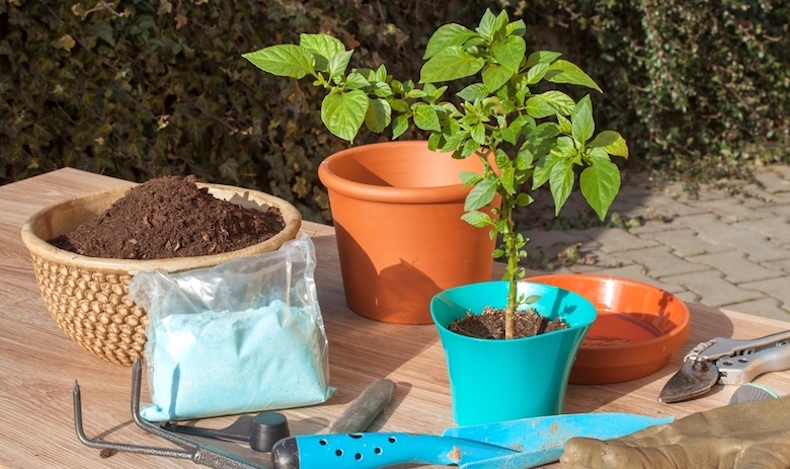
When they're big enough, transplant chillies into larger pots
Image: Marsan/Shutterstock
When your chilli seedlings are big enough to handle without breaking, gently transplant them from seed trays into individual pots of compost and grow them on until all risk of frost has passed. When they’re large enough, you can transplant them to their final position, which is usually about May.
You can grow chillies individually, by transplanting them into 2 litre containers, or plant them in grow bags, allowing three plants per bag. Place the pots or growbags undercover in a warm greenhouse, conservatory, or polytunnel.
Alternatively, plant your chillies outside in a sunny, sheltered spot. Gradually acclimatise your plants to outdoor conditions over a period of 7 to 10 days before transplanting them into well prepared beds of fertile, moist, well-drained soil. Space your chilli pepper plants 50cm (20") apart in the ground.
How to grow on chilli pepper plants
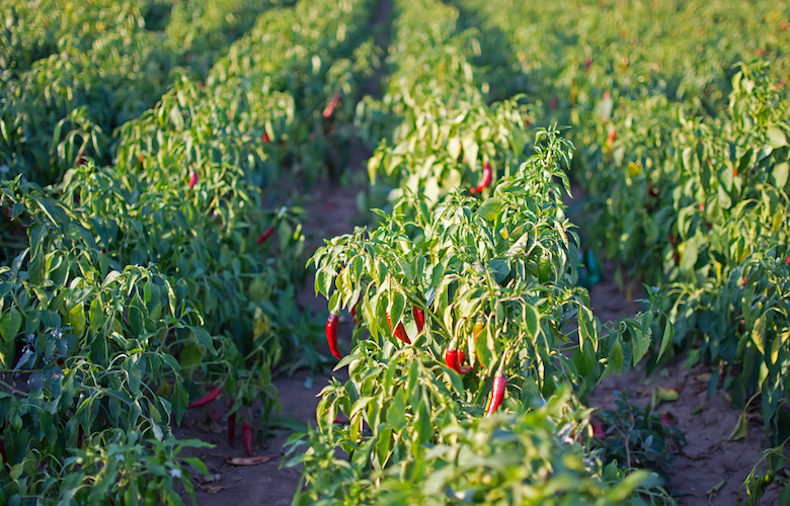
Use a high potash tomato fertiliser to get the best harvest
Image: Victority/Shutterstock
Water your chilli plants regularly throughout the growing season, and once the first fruits have set, feed them weekly with a high potash tomato fertiliser. Also remember to:
- Pinch out the growing tip of the first flowering shoots to promote more branching and a better harvest.
- Water regularly but sparingly. It's best to keep your soil a little on the dry side because slightly stressing your chilli plants helps to produce hotter peppers. Taller varieties of chilli pepper may require staking.
- Add a thick mulch of organic matter around the base of the plants to help conserve moisture and suppress weed growth.
Growing chillies indoors? Do remember to open windows and doors to provide insects access to the flowers to ensure good pollination. Alternatively, hand pollinate the chillies by moving from flower to flower, tickling the centre of each with a fine artist's paint brush.
When to harvest chillies
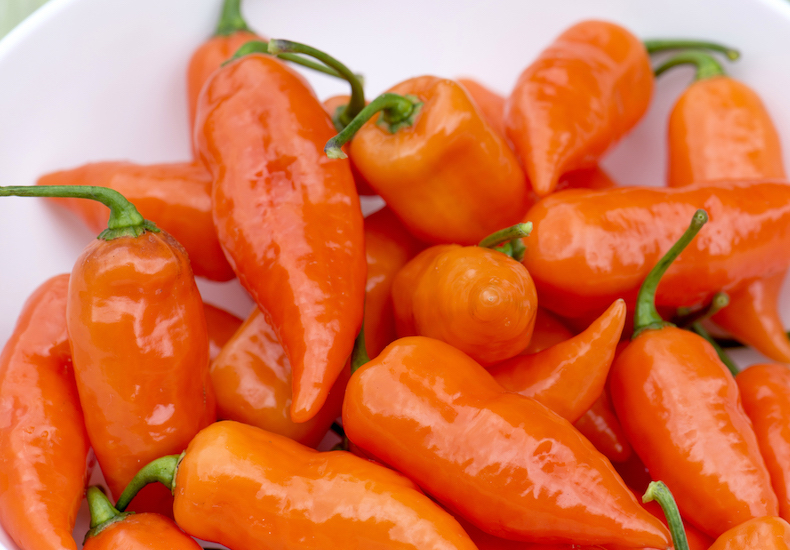
Harvest your chillies before the colder months
Image: Chilli Pepper 'Habanada' from Thompson & Morgan
Chillies require warmth and long sunny days to ripen properly. From an early sowing, this shouldn't be a problem, but later sowings in the UK may leave your peppers feeling the cold as summer days begin to shorten.
Chillies are usually ready to start harvesting in about July. The more you pick, the more chillies your plant will grow. Towards the end of the season you might like to leave chillies on the plant a little longer, allowing them to mature until they achieve a deep red colour and intense flavour. This will let the plant know to produce less fruit, so wait until you’re ready to slow down.
If the weather starts to cool before your crop has fully ripened, bring your plants indoors and let them ripen on a warm sunny windowsill. Harvest chillies one at a time by cutting them from the plant with secateurs. Chilli peppers grown outdoors must be harvested before the first frost.
How do you store chillies?
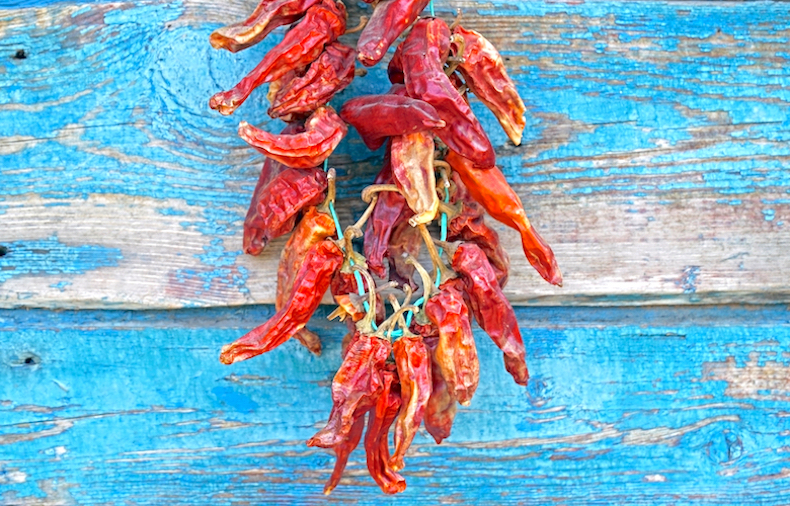
By drying or freezing your chillies, you can preserve their taste
Image: Mr Aesthetics/Shutterstock
To preserve your chillies to enjoy over the winter, you can dry them or freeze them:
- How to dry chilli peppers: Take a needle, and thread the stems of the chilli peppers together on some twine so that they form a "daisy chain". Hang them in a warm, well-ventilated spot and let them air dry over a period of 4 to 5 weeks.
- How to freeze chilli peppers: Freeze chillies in freezer bags straight after picking, without any further preparation. After you defrost your chillies, you'll find the flesh slightly softened, but don't worry, they'll taste just as good as they did when you picked them.
For a quick recap and some chilli growing tips, check out the short video below:
Do you love growing chillies? Let us know on our Facebook page - and if you have pictures of your crop, please share! Find loads more chilli growing advice and guides at our hub page.
Return to
- Vegetables - 'How To' Gardening Guides
- All 'How To' Gardening Guides
- Gardening guides covering balcony and small space gardening
Other quick links

Written by: Sue Sanderson
Plants and gardens have always been a big part of my life. I can remember helping my Dad to prick out seedlings, even before I could see over the top of the potting bench. As an adult, I trained at Writtle College where I received my degree, BSc. (Hons) Horticulture. After working in a specialist plantsman's nursery, and later, as a consulting arboriculturalist, I joined Thompson & Morgan in 2008. Initially looking after the grounds and coordinating the plant trials, I now support the web team offering horticultural advice online.Sign Up For Exclusive Special Offers




© 2025 Thompson & Morgan. All rights reserved. A division of Branded Garden Products Limited.
Sign up for exclusive offers!



